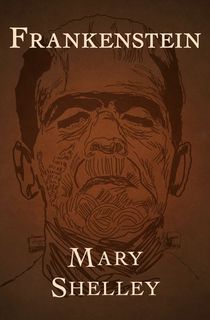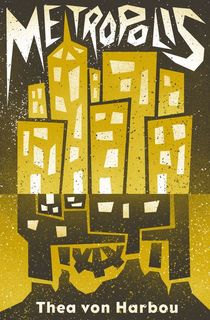The origins of speculative literature are murky. Writers have envisioned new realities since the ancient times, so pinning down the first speculative literature writer is like bailing the ocean with a bucket.
However, we can be certain that from the inception of literature, women have shaped the genres we now know as science fiction and fantasy. Women have always belonged in this space, not only as fans but as creators too.
Here are ten of the earliest female sci-fi and fantasy authors, spanning from the most ancient days of poetry to more recent innovators.
Corinna (born c. 518 B.C.)

Corinna was an ancient Greek poet, estimated to have lived sometime between the fifth and third centuries BC. Her works survive only in fragments, and often reworked local myths, with distinct innovations unique to her voice.
Corinna used lyrical styles to tell mythic narratives. One such poem tells the story of a singing contest between two mountains, Cithaeron and Helicon. The gods name Cithaeron the winner, and Helicon revolts by throwing rocks.
There are forty surviving poetry fragments attributed to Corinna, more than any other ancient female author other than Sappho.
Marie de France (1160-1215)

The Lais of Marie De France
Marie de France, born in the year 1160 in what is now France, was a medieval poet. She was the first woman known to write poetic verse in French. Her most famous work is The Lais of Marie de France, a series of short narrative poems, including the story “Bisclavret,” otherwise known as “The Werewolf.”
Bisclavret is a baron who vanishes without a trace for three days every week. His wife, anguished by his disappearances, begs Bisclavret to tell her where he goes. To her shock, Bisclavret reveals that he is a werewolf. He asks his wife to keep his clothing safe so he can return to human form.
His wife, however, is so horrified that she devises a plot to leave Bisclavret. She sends a knight to steal his clothing so Bisclavret is stuck in his wolf shape. A year later, the king goes hunting and his dogs corner Bisclavret in the wilderness. Bisclavret must then find a way to convince the king to spare his life.
Marie de France is hugely influential in the medieval romance genre, which has shaped the works of writers like J.R.R. Tolkien and C.S. Lewis.
Margaret Cavendish (1623-1673)

The Blazing World
British author Margaret Cavendish published under her own name when most women writers remained anonymous. She wrote poetry, plays, prose romances, essays—a true polymath.
The work that makes her famous in SFF circles is Description of a New World, Called the Blazing World, otherwise known by its truncated title, The Blazing World.
Cavendish published this utopian novel in 1666. It is a fanciful depiction of an otherworldly kingdom that can be reached by the North Pole. A young woman discovers the Blazing World when she is kidnapped and unexpectedly made empress of the new land populated with talking animals. The novel explores issues of sentience and women’s roles in society.
Cavendish often remarked that she became a writer to become famous, so she could use her fame to gain honor and advocate for women’s education. She argued that her own prolific works would have been better still if she had been able to attend school like her brothers.
Mary Shelley (1797-1851)

Frankenstein
Of course any list of early SFF writers must include Mary Shelley, author of Frankenstein. It was summer 1816 when the idea first arrived, during a now-mythic competition between Shelley, her husband Percy Bysshe Shelley, and their friend and fellow writer, Lord Byron.
The story is inspired by Shelley's travels through Europe, particularly Geneva and Switzerland, and conversations with her husband about the occult and galvanism (the generation of electricity). Fusing these concepts together, Shelley came up with the idea of a scientist experimenting with creating life in his laboratory, only to be horrified by his successful creation.
Shelley wrote and published Frankenstein during events of great sorrow. She wrote the first four chapters in the weeks following the suicide of her sister Fanny. In the year prior, Shelley had lost her first child, a baby girl born two-months premature.
Shelley finished Frankenstein in 1817 and published the story anonymously in 1818. It has gone on to be one of the most iconic monster stories in literature and film.
Jane Webb (1807-1858)

The Mummy
Jane Webb wrote before the term science fiction was coined, but her work is undeniably influential to the genre. In order to support herself financially after her father’s death, Webb wrote “a strange wild novel, called The Mummy” in which she “attempted to predict the state of improvement to which this country might possible arrive.”
This 1827 novel concerns the Egyptian mummy of Cheops, who is reanimated by galvanic shock in the year 2126. It was the first English-language story about a mummy that returned to life.
While she was likely inspired by Shelley’s Frankenstein, Webb’s mummy is not a creature of horror but rather a witty advisor on issues of life and politics.
Notably, Webb’s writing imagined futures with more than political changes. She envisioned technological advances, new fashions, and even innovative societal arrangements. Women in Webb’s stories wore pants—a symbol of social mobility—and steam-powered automatons replaced surgeons and lawyers.
In addition to her fiction, Webb wrote gardening manuals that argued the past time was appropriate for young women. She married horticulturist John C. Loudon, who sought out Webb after reading and admiring The Mummy.
Christina Rosetti (1830-1894)

Christina Rosetti: The Complete Poems
Christina Rosetti was an English poet whose work was primarily aimed at children. In addition to her writing, she modeled for her brother Dante’s paintings. As a young and lively child, before she knew how to write, she dictated her first story to her mother as her scribe.
Rosetti experimented with sonnets, hymns, and ballads, drawing inspiration from Bible stories, folk tales, and saints’ lives.
Rosetti’s most famous work is Goblin Market, a fantastical story of two young girls’ misadventures with the fae. Goblin merchants tempt the poem’s protagonists Laura and Lizzie to consume magical fruit. Lizzie resists the goblins, but Laura pays them a lock of hair and a tear more rare than pearl to gorge on their wares.
Laura’s health deteriorates as she pines over the fruit and searches in vain for the goblins, whom she can no longer hear. Lizzie must figure out how to rescue her sister from the goblin’s curse.
Scholars debate the interpretations of this fantasy poem, but it undeniably portrays a powerful bond of sisterly love.
Gertrude Barrows Bennet (1884-1948)

The Citadel of Fear
Gertrude Barrows Bennett wrote her first short story, “The Curious Experience of Thomas Dunbar,” at age 17, and the magazine Argosy published it under the byline G.M. Barrows. This is said to be the first instance of an American female author publishing science fiction using her real name.
However, much of her legacy as a female fantasy writer was hidden for years under the name Francis Stevens, the male pseudonym given to her by another magazine.
Bennett wrote fiction as a means of supporting her family, especially her aging mother. Her stories follow dark adventures, including evolution gone horribly wrong, men possessed by supernatural creatures, and worlds lost to time.
In her 1918 novel, The Citadel of Fear, an isolated Aztec city is rediscovered during World War I. In her 1919 novel The Heads of Cerberus, credited as one of the first dystopian novels, people are transported to a totalitarian Philadelphia of 2118 by inhaling a mysterious gray dust. And in her 1920 novel Claimed! a supernatural artifact summons an ancient god to 20th century New Jersey.
These stories cemented her legacy as the inventor of dark fantasy, reportedly influencing writers like H.P. Lovecraft and A. Merritt.
Thea von Harbou (1888-1954)

Metropolis
Thea von Harbou wrote the novel and screenplay for Metropolis, a silent film that is one of the first feature-length science fiction movies. Her novel debuted in 1925 specifically as a treatment for the film, which her husband Fritz Lang directed and released in 1927.
Metropolis follows the attempts of Freder, a wealthy city planner, and Maria, a poor schoolteacher, to overcome social inequality. They live in the futuristic dystopian city Metropolis, where workers toil underground, separated from the wealthy who live lavishly in colossal skyscrapers.
Metropolis is not von Harbou’s only significant contribution to science fiction. She also published the otherworldly novel The Rocket to the Moon in 1928, which was adapted into the 1929 film Woman in the Moon.
This film first introduced mass audiences to the basics of space flight while speculating on what might happen if humans visited the dark side of the moon. Von Harbou presented several technical ideas for space flight that are used in rocketry today.
RELATED: 10 Mind-Bending Hard Science Fiction Books by Women
Miriam Allen deFord (1888-1975)

Philadelphia-born Miriam Allen deFord was a self-avowed "born feminist" and activist. In addition to her political work, she was also an Edgar Award-winning author of mysteries and sci-fi short stories.
Much of her speculative fiction appeared in The Magazine of Fantasy & Science Fiction during Anthony Boucher's tenure as editor, beginning in 1949.
DeFord went on to publish two anthologies of her sci-fi work, Elsewhere, Elsewhen, Elsehow and Xenogenesis. She also edited the sci-fi mystery anthology Space, Time, and Crime.
Clare Winger Harris (1891-1968)

The Artificial Man
Between 1923 and 1933, American author Harris published stories under her own name that explored themes of sentience, autonomy, and the boundaries of humanity.
She also contributed to attempts to codify and define sci-fi, writing a piece on the core themes of science fiction for Wonder Stories in 1931.
Although she was less active as a writer after 1933, Winger-Harris did publish an anthology of her own work in 1947.
RELATED: What Is New Wave Science Fiction?






